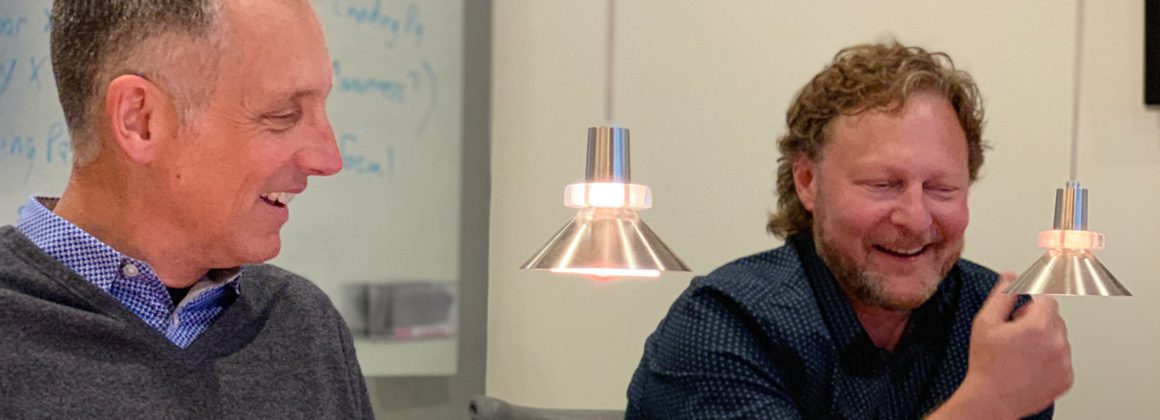

This article was written by Emily Parkherst and featured in the Puget Sound Business Journal
Ice cubes clink softly as Eric Gutierrez leans back in his chair and swishes the Westland Distillery Single Malt Whiskey around a lowball glass.
“Anything is better than an ad. What could be worse than an ad?” Gutierrez says, pushing his glasses back against the bridge of his nose.
That’s an interesting comment coming from an ad guy, I say to him.
Gutierrez is the creative partner at advertising agency Hey,. Yes, that’s “Hey” with a comma after it. It’s meant to be the beginning of a conversation, they tell me.
And conversation with Gutierrez and his business partner, Chris Lloyd, feels like a modern version of Mad Men – witty and easy with the casual confidence of people whose job it is to convince us to buy things we don’t always need.
In fact neither of them are far from Mad Men’s fictional world: Lloyd started out his advertising career on the Mad Men stage: Madison Avenue in New York City, and Gutierrez comes by his slick image naturally – before pursuing a career in advertising, he was cast as the leader of a religious cult in the soap opera Guiding Light.
After watching himself on TV for six months, Gutierrez said he came to the conclusion that there must be something he could do better than acting.
After long careers working for big agencies, in 2010, the pair decided to leave worldwide ad agency DDB and start their own company so they could focus on some of the new technology available to them that the bigger agencies aren’t as quick to adopt.
“Our solution isn’t a technical solution, it’s the solution that’s the right solution, but 90 percent of the time there’s a technical aspect to it,” Lloyd said.
And for them, advertising is no longer about creating what many of us think of as “ads.”
In fact, as more and more agencies are doing, Hey, avoids traditional ads as much as possible. And so far, it’s working. The 13-person company has gone from $500,000 in revenue in 2010 to more than $2 million this year.
It’s a shift in the advertising world where firms are employing everything from single-service apps to social media to put together campaigns that consumers don’t immediately dismiss as advertising.
For instance, Hey, represents the luxury Seattle salon Gene Juarez, which came to Lloyd and Gutierrez looking to reach a younger audience.
In response, they built the “Facebook Beautification Project,” where customers could come into the salon and, for $75, get a full makeover, followed by a photo shoot by a professional photographer. The photos were watermarked with Gene Juarez’s logo, and then those customers could use them as their Facebook profile photos.
They hired a firm to build a Facebook app that would make the process easy, they worked with a PR firm to handle media, and also worked with event professionals to organize and handle the events at the various salon locations. Hey, put together advertising campaigns for Facebook and Pandora radio, and worked with influential fashion bloggers to spread the word.
“All the events sold out,” Lloyd said, and were also covered by several media outlets.
This, the pair said, is what modern advertising looks like.
“Technology is really just a bigger box of crayons for a creative agency,” Gutierrez said.
Now, agencies are as much project managers as they are the creative force behind the campaigns as everyone tries to break through the noise consumers are bombarded with on a daily basis.
“That’s the story of marketing today. What used to take two tactics takes 20, and each need to connect and work together,” Lloyd said.
But what’s remained the same and will always remain a part of advertising, Lloyd said, is the focus on storytelling.
Well, that and the whiskey.

Comments are closed.